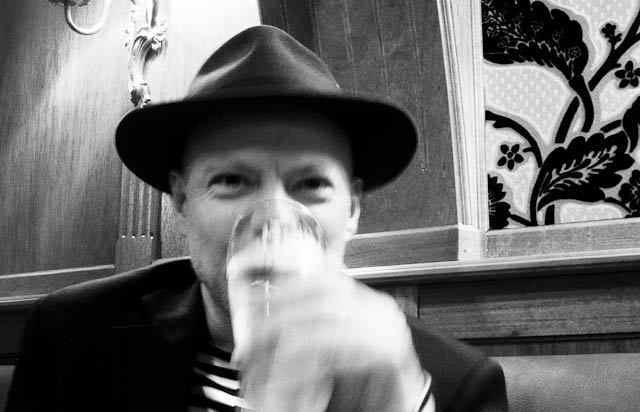For the past couple of years I’ve intermittently tried to acquire a proper microscope, but those I’ve found have either been too expensive or too crappy. Apparently medical researchers have money for equipment, which is priced accordingly. Also, I guess there might be more to it than throwing glass and cast iron together
Since I’m nowadays working as a technician at Akademin Valand, I occasionally hunt the basement to see if there aren’t any technical treasures lurking somewhere. I’d heard that the uni used to have a hologram creation machine, and once I found it there was a microscope right next to it. How neat! It’s a Nikon Optiphot, and I’ve been spending after-work hours trying to get it assembled.
As far as I can tell, it’s more or less complete, but lacking any adapter for a digital camera. Since I have a bunch of dead laptops lying about I’m thinking of stripping the built-in camera out and 3d-print an adapter to stick on top of the scope. Ideally I’d use a DSLR or even one of the Hasselblad bodies on top, so the past week I’ve done an inventory of all the accessories I could find to see if I have anything useful.
For now the only thing for my troubles are two blurry cellphone photos. In the name of science I cut myself and looked at blood; the larger image below are my red blood cells! How cool is that? In addition to a proper camera mount, I need to learn how to calibrate and use the microscope — all manuals I’ve found are geared towards people who know what result they ought to get, so I’m floundering even when I try to follow along. Luckily, it turns out that a colleague at work has a physics doctorate and knows a lot about microscopes, so there’s a chance I’ll get to learn how to use it properly!
Concurrent with my minuscule tinkering, I’m taking an astronomy course at the university (free higher education, hell yeah!) which is likewise rooted in an ambition to find out how things work. Not until now did I realise that all heavy elements in the universe have been created in stars long gone, and having a broad understanding of earths history makes looking at things in the microscope so much more rewarding; You sort of get a bigger perspective, and it’s fascinating.


Also, the Foldscope seems like an worthwhile endevour, and in addition to using the “proper” microscope, this might be a good project to try out. It really goes to the core of what’s driving my ambition regarding microscopy — let’s see if it delivers.
Our intent is to engage a broad group of people to collectively generate the “world’s most awesome biology manual” which is written from the context of open questions instead of historical discoveries. The goal is to bring together a broad range of members from different communities, context, countries and skill level. To participate in the experiment, you will commit to documenting one single experiment (or series) which can be replicated by anybody in the world with access to a Foldscope or other microscopy platform.
→ Foldscope: Microscopy for everyone

